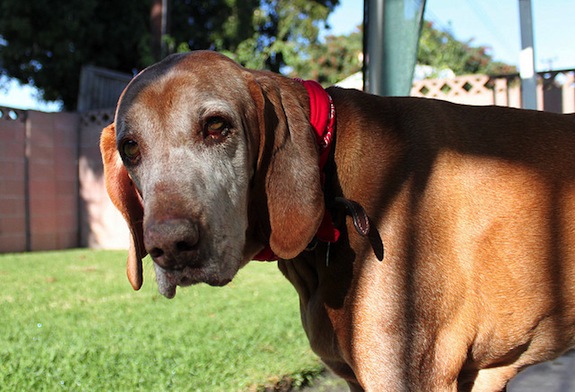Why Do Big Dogs Die Younger?
According to new research, it’s because they age faster

Image: The Q
The average Great Dane spends about seven years on this earth, digging holes and smelling everything it can. The average teeny tiny Toy Poodle will double that lifespan, to 14 years or so. And that difference holds for most dogs—the bigger they are, the shorter their lives. This is kind of weird, because, when you compare size across species, it’s not necessarily true that bigger animals live shorter lives. Some very large animals live quite long lives. Elephants stick around for 70 years, and blue whales can live to 90. So why do bigger dogs die sooner?
According to new research, it’s because they age faster. A study in the American Naturalist drew data from the Veterinary Medical DataBase that covered 74 breeds and over 50,000 dogs and looked at when and why they died. The American Society of Naturalists writes:
Large dogs age at an accelerated pace, as though their adult life is runing at a faster pace than small dogs’. Hence, a first answer to the question of why large dogs die young is that they age quickly.
The study puts the findings this way:
Across breeds, body size is strongly positively linked to the absolute speed at which the mortality hazard increases. This relationship was still evident when looking at the aging rate relative to the current level of the mortality hazard (proportional scale); that is, large dogs age at an accelerated pace, suggesting that their adult life unwinds in fast motion. Additionally, size was connected to the baseline hazard, which was higher in large dogs compared to small ones. We found no clear relationship between the age at the onset of senescence and size.
This sounds simple: big dogs age quicker than little dogs. But it’s still not clear why that’s true. Answering this question could actually teach researchers about genetics and physiology not just of dogs, but of humans too.
More from Smithsonian.com:
Dogged
In New Zealand, Dogs Are Being Taught How To Drive Cars
/https://tf-cmsv2-smithsonianmag-media.s3.amazonaws.com/accounts/headshot/Rose-Eveleth-240.jpg)
/https://tf-cmsv2-smithsonianmag-media.s3.amazonaws.com/accounts/headshot/Rose-Eveleth-240.jpg)